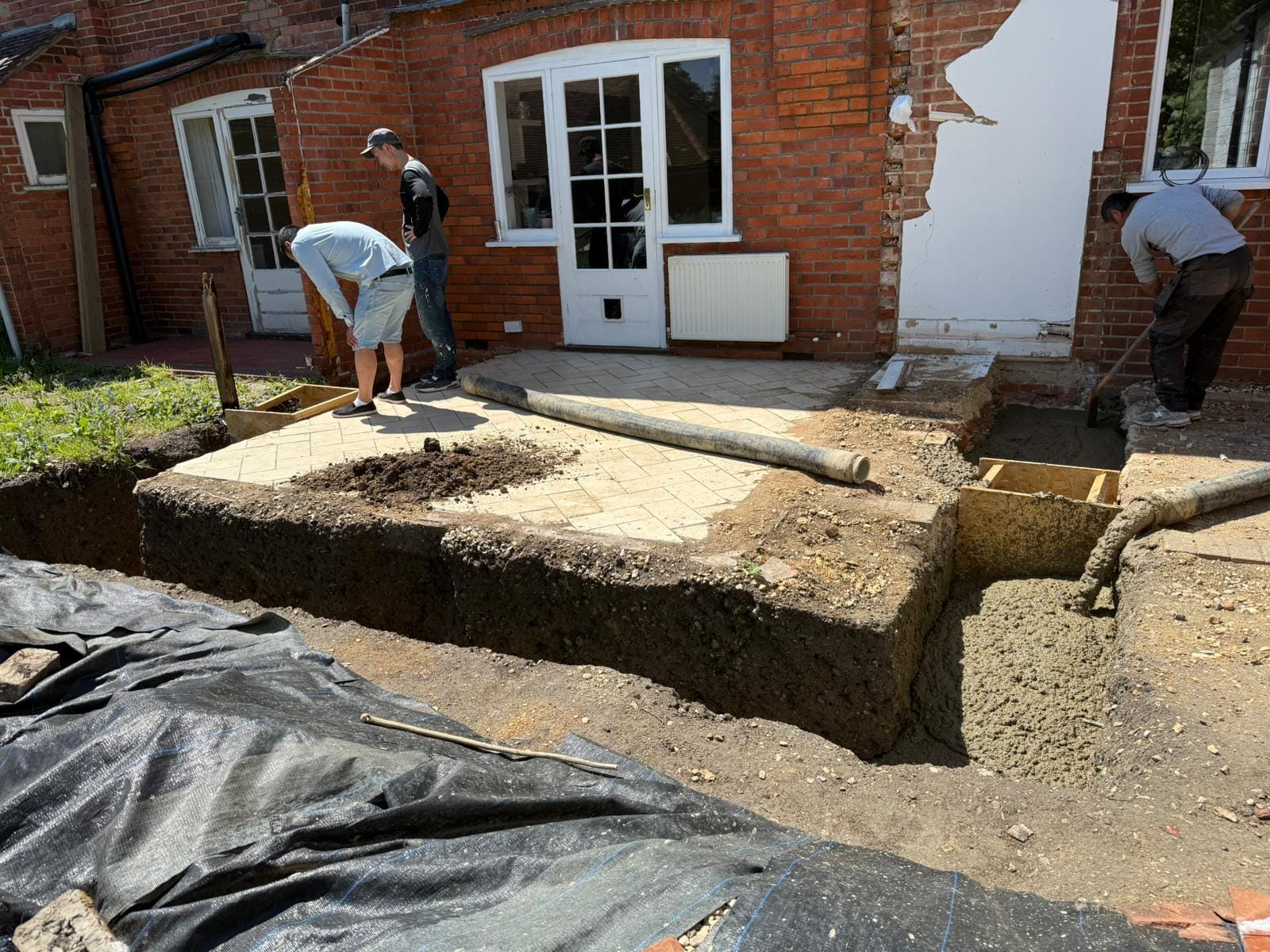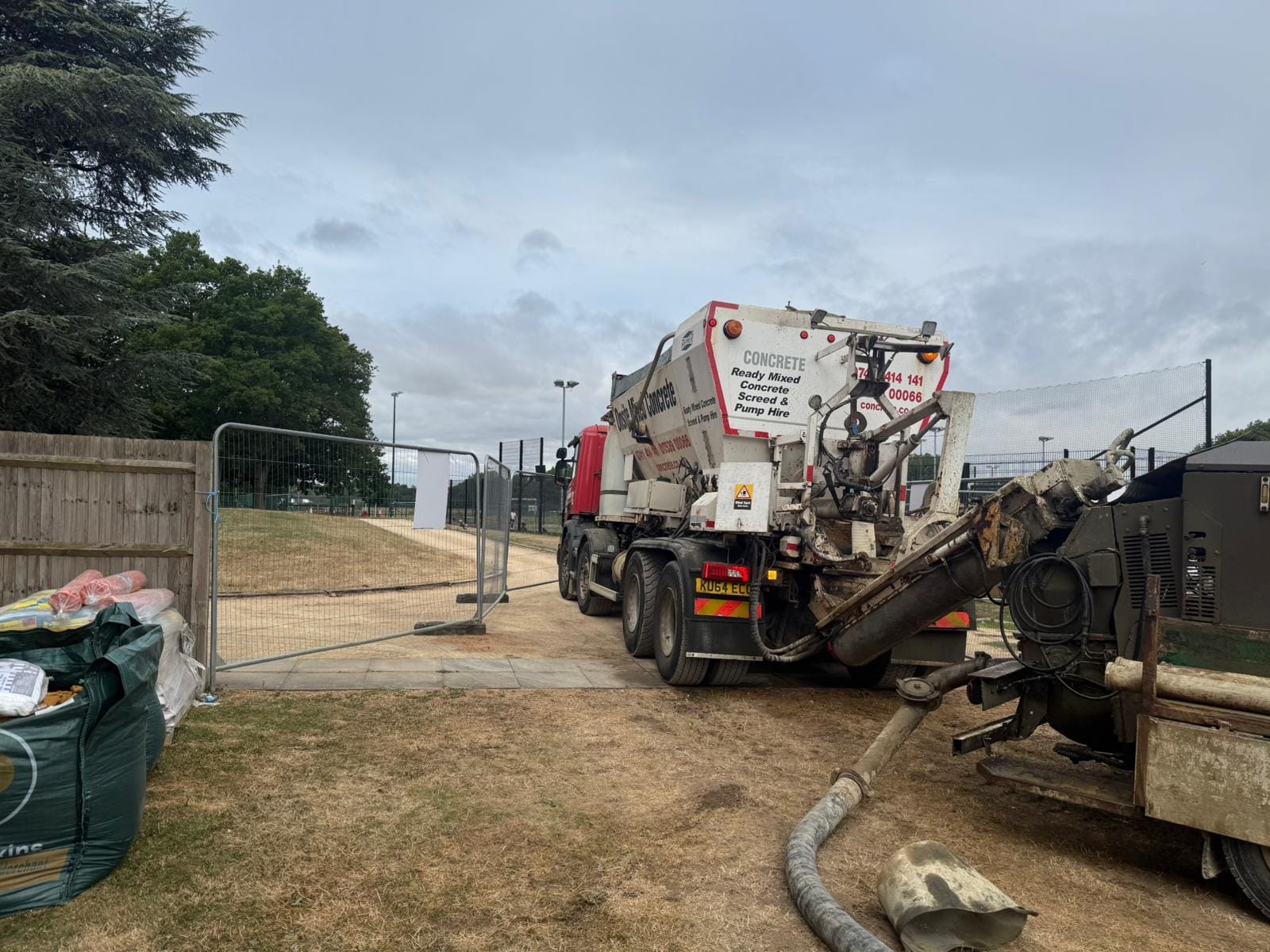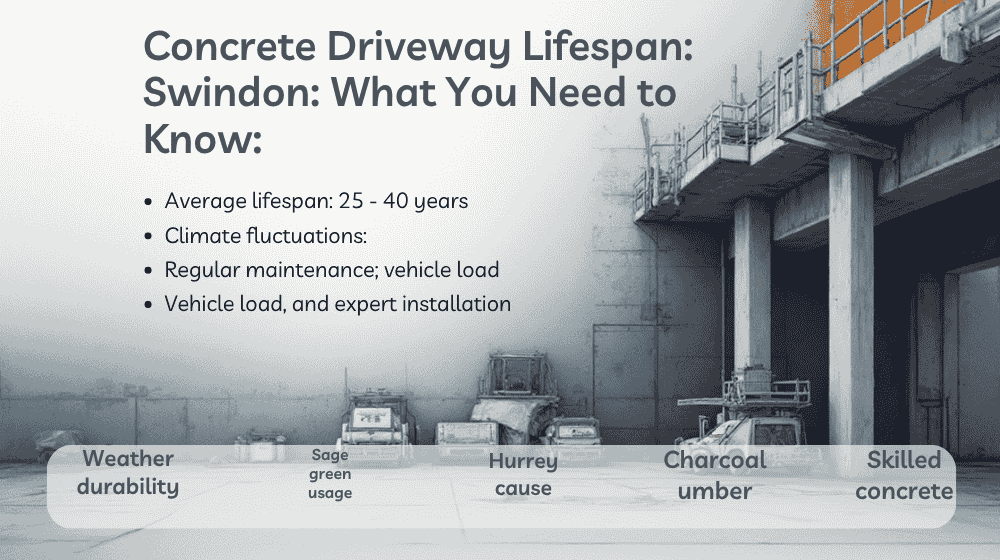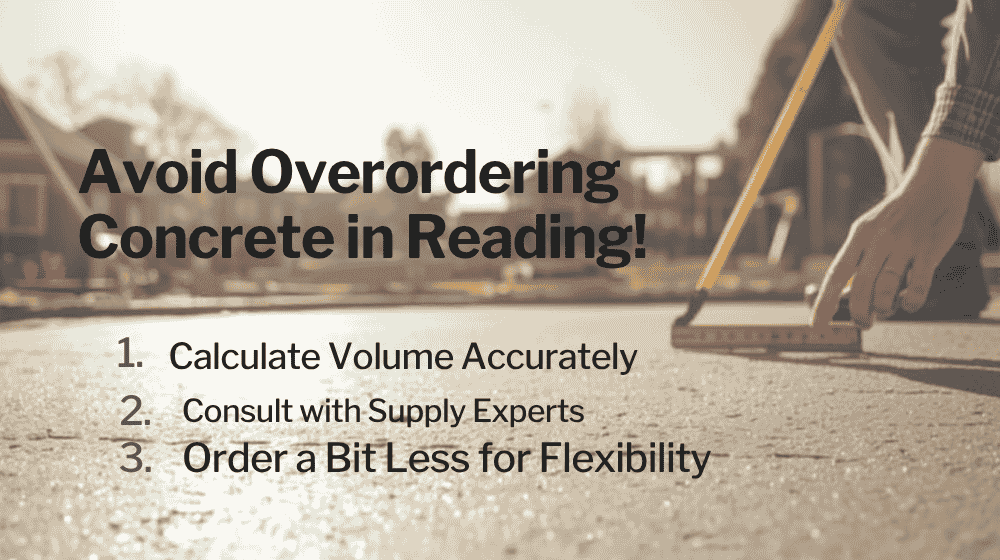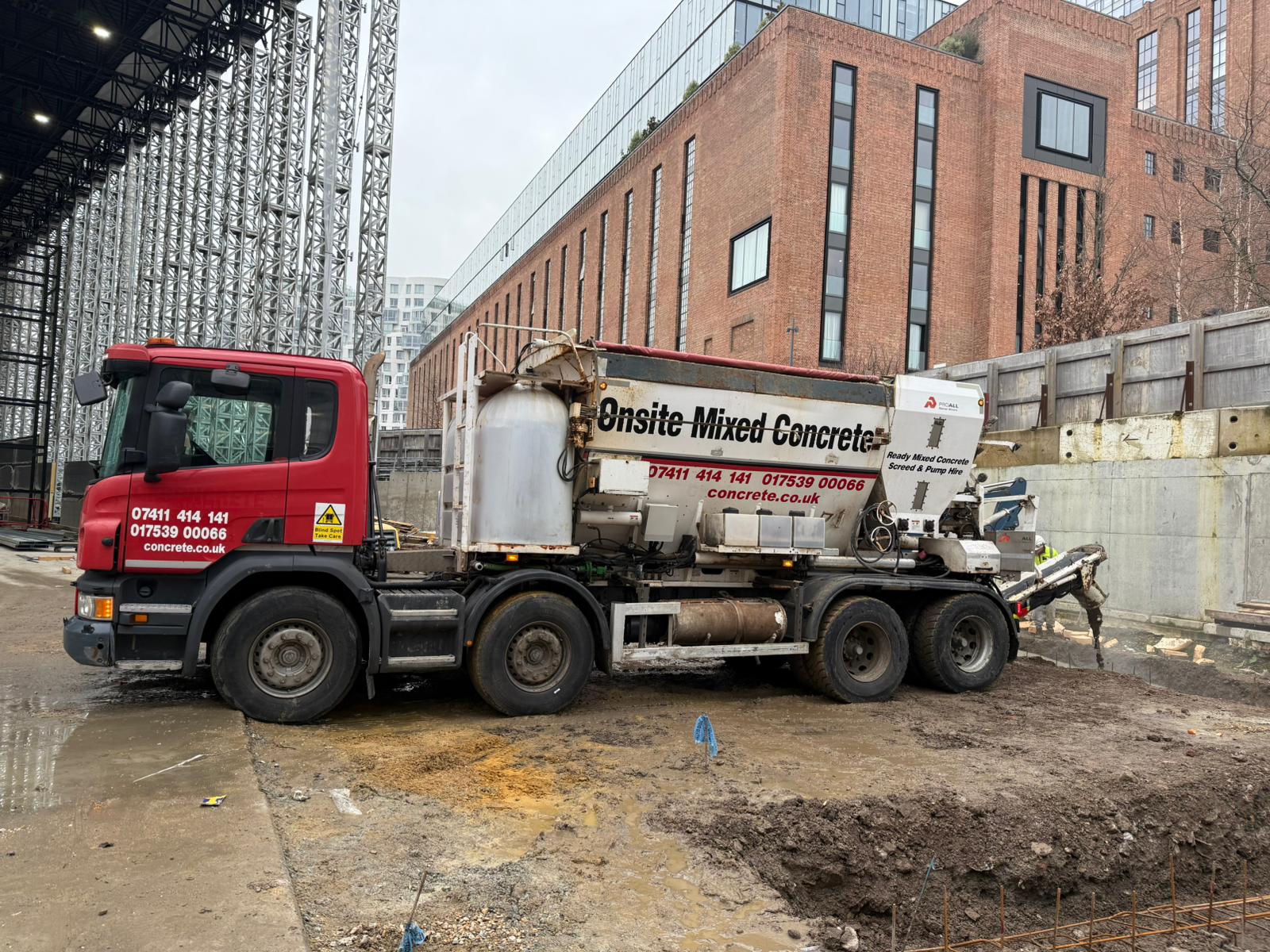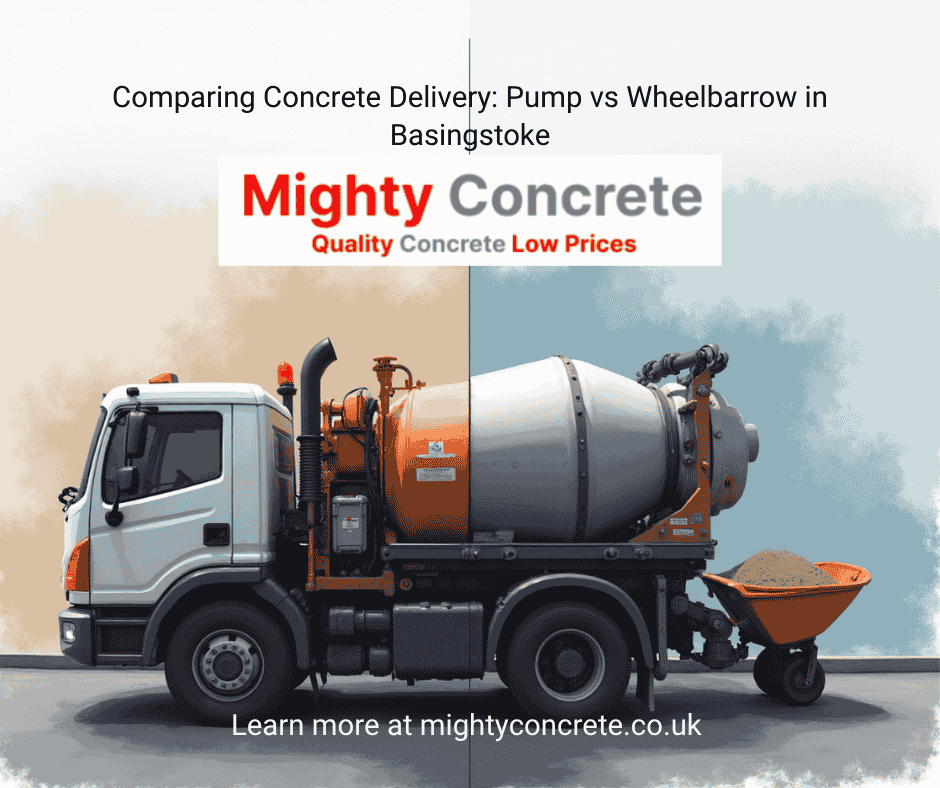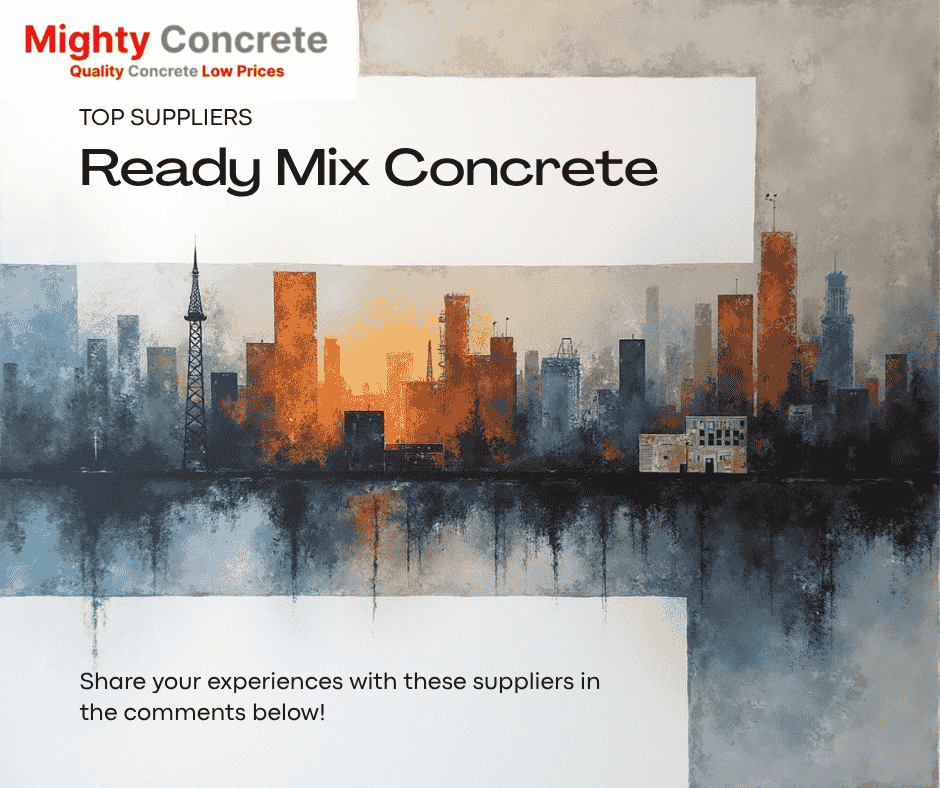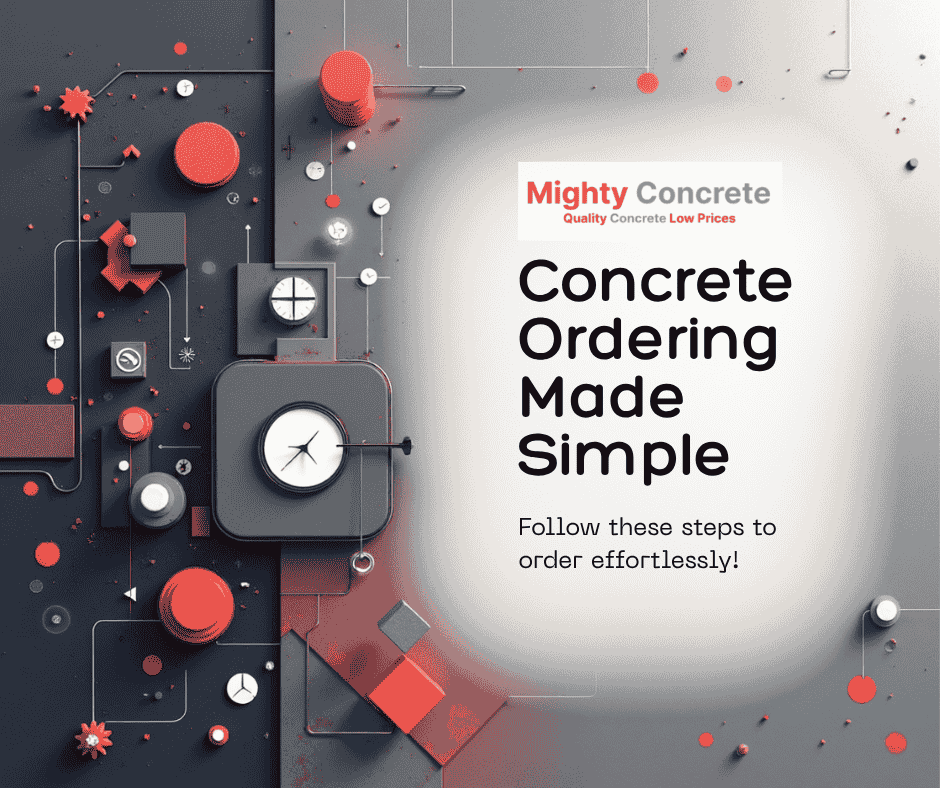Concrete is one of the most important building materials in the world. You might not notice it every day, but it’s everywhere – in homes, schools, driveways, big buildings, and even bridges. If you’re building something, you need to know which type of concrete to use. But don’t worry. This guide will help you understand the different kinds of concrete, where they are used, and why they’re important. Let’s get started.
1. Ready Mix Concrete
To begin with, ready mix is concrete that comes already mixed. It’s made in a factory and then delivered to the construction site in a big truck, ready to pour.
Where is it used?
- Driveways and patios: It gives a smooth and strong finish, making it ideal for places where appearance and durability are key.
- House foundations: It is great for building strong and reliable bases that can support the entire structure of a home.
- Big projects: Builders use it when they need lots of concrete quickly, as it saves time and effort.
Why is it good?
There are several reasons why ready mix is popular. First, it saves time because it’s already mixed when it arrives. Furthermore, you don’t waste materials since it’s measured and mixed accurately. Finally, it’s always the same quality, which ensures your project looks professional and lasts long.
2. Volumetric Concrete
In contrast to ready mix, volumetric is mixed right at your construction site using a special truck. This allows you to make only the amount you need, which is incredibly useful for flexibility.
Where is it used?
- Small projects: It’s perfect for minor tasks, such as fixing a driveway or making a small garden path.
- DIY jobs: If you’re unsure how much you need, volumetric concrete gives you the option to adjust on-site.
- Flexible projects: Because the mix can be changed, you can make it stronger, smoother, or whatever suits your project.
Why is it good?
One major benefit is that you only pay for what you actually use. Additionally, it’s perfect if you’re unsure about how much concrete to order. Lastly, it helps save materials because there’s no waste left behind, making it both economical and environmentally friendly.
3. Screed
Screed is a type of concrete that is extremely smooth and fine. Unlike other types of concrete, it is specifically designed to create flat, level surfaces.
Where is it used?
- Floors: Screed is commonly used to create a nice flat base for carpets, tiles, or wooden flooring.
- Underfloor heating: It covers heating pipes, ensuring the heat spreads evenly across the floor.
- Warehouses: It creates a shiny, hard floor that lasts a long time, even in high-traffic areas.
Why is it good?
There are several reasons screed is important. To begin with, it makes floors look even and perfectly flat, which is essential for final finishes. Additionally, it helps heat move through floors better, particularly in homes with underfloor heating. Lastly, it’s a great solution for both homes and big buildings, thanks to its durability and smooth finish.
4. Concrete Pump
Concrete pumping involves using special machines to move concrete to tricky or hard-to-reach places.
Where is it used?
- Tall buildings: It helps deliver concrete to the top floors quickly and efficiently.
- Hard-to-reach spots: It’s perfect for spaces like small gardens, basements, or tight areas where trucks can’t access easily.
- Big pours: It works exceptionally well for large floors, foundations, or walls where a lot of concrete is required.
Why is it good?
One of the main advantages is that it saves a lot of time because it is pumped exactly where you need it. Moreover, it’s far less messy and easier compared to traditional methods like using buckets or wheelbarrows. Finally, it’s the go-to choice when places are difficult to access.
5. Domestic Concrete
Domestic concrete is a type of concrete made specifically for home projects. It’s strong, affordable, and very easy to work with.
Where is it used?
- Driveways: It creates a smooth and tough surface that can easily support cars and heavy foot traffic.
- Patios and paths: Domestic concrete is perfect for outdoor areas like garden patios or pathways.
- Garage floors: It provides a flat, strong surface that can hold heavy tools, equipment, and vehicles.
Why is it good?
First and foremost, it’s budget-friendly, which makes it an excellent choice for home projects. Additionally, it’s durable, ensuring it will last for years without cracking or breaking. Lastly, it’s easy to use for small or medium-sized areas, making it great for DIY projects.
6. Commercial Concrete
On the other hand, commercial concrete is extra strong and specifically made for big buildings or industrial projects.
Where is it used?
- Office buildings: Builders use it for foundations and walls because of its exceptional strength.
- Retail stores: It’s perfect for floors in busy shops, where it needs to withstand constant foot traffic.
- Factories: Commercial concrete is tough enough to hold up heavy machines and significant loads.
Why is it good?
The main reason commercial is popular is because it’s super strong and capable of supporting heavy weight. Additionally, it lasts a long time, even with heavy use, which makes it perfect for large and busy structures.
7. Pre-Mix Concrete
Pre-mix concrete comes ready to use in bags. It’s easy to handle and ideal for smaller jobs.
Where is it used?
- DIY projects: Small patios, garden walls, or steps can be done effortlessly with pre-mix concrete.
- Repairs: It’s great for filling holes, fixing cracks, or patching driveways.
- Gardens: It’s perfect for small outdoor features like decorative planters or walkways.
Why is it good?
Firstly, it’s easy to carry, mix, and use, which makes it perfect for DIY enthusiasts. Furthermore, it saves a lot of time since the mix is pre-measured and ready to go.
8. On-Site Concrete
On-site concrete is mixed right at the location where you’re building, making it fresh and customizable.
Where is it used?
- Foundations: It’s great for building strong bases for homes or buildings.
- Extensions: Builders use it for small projects like adding rooms or other structures.
- Custom jobs: Because it’s mixed on-site, you can adjust the quantity and mix as needed.
Why is it good?
One big advantage is that it’s fresh since it’s mixed right where you need it. Additionally, it avoids waste because you only mix what you need.
9. Concrete for Floors
Some special mixes are made just for flooring projects.
Where is it used?
- Garages: It provides a strong, smooth surface perfect for cars and tools.
- Homes: It acts as a flat base for flooring like carpet, wood, or tiles.
- Factories: It makes floors strong enough to handle heavy machinery.
Why is it good?
Above all, it creates a strong, level surface. Additionally, it’s durable, meaning it will last a long time without much maintenance.
Final Thoughts
At first, concrete might sound confusing, but when you break it down, it’s quite simple. If you know what you’re building, choosing the right type of concrete becomes easy. For example, ready mix is perfect for big projects, while screed is ideal for smooth, flat floors. Similarly, for DIY tasks like small garden walls or patios, pre-mix is the best choice.
Ultimately, when you pick the right type of concrete, your project will be strong, long-lasting, and visually impressive. If you’re ever unsure, asking a professional can help ensure success. With the right mix, whether it’s a driveway, patio, or skyscraper, your project will stand the test of time.
So, the next time you see a smooth road or a towering skyscraper, remember: concrete is the silent hero that keeps everything standing strong.

